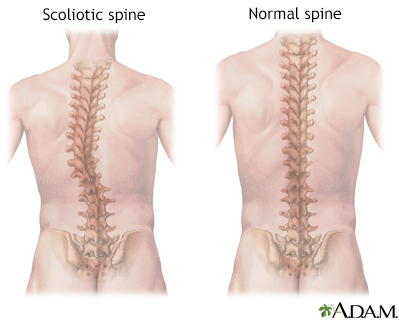Scoliosis

What is Scoliosis?
Scoliosis is a condition that causes the spine to curve to the side, forming an "S" or "C" shape rather than a straight line.
Who’s at Risk for Scoliosis?
Scoliosis can occur at any age, but it's most commonly diagnosed during adolescence. It affects both genders, but girls are more likely to experience curve progression.
What Causes Scoliosis?
In most cases, the cause of scoliosis is unknown. However, it can be associated with conditions like cerebral palsy, muscular dystrophy, or genetic conditions like Marfan syndrome.
How Does Scoliosis Start?
Scoliosis typically becomes apparent during the growth spurt just before puberty.
What Are the Symptoms of Scoliosis?
Symptoms can include uneven shoulders, one shoulder blade appearing more prominent than the other, an uneven waist, or one hip appearing higher than the other.
How is Scoliosis Diagnosed?
Scoliosis is typically diagnosed through a physical exam and imaging tests like X-rays, MRI, or CT scans.
How Can Scoliosis Be Treated?
Treatment depends on the severity of the curve and can range from observation for mild cases to bracing, or in severe cases, surgery.
What Complications May Occur with Scoliosis?
Severe scoliosis can cause complications like lung and heart damage, chronic back pain, and changes in appearance.
How Can I Prevent Scoliosis?
There's no known way to prevent most cases of scoliosis as many are due to unknown causes.
Long-term Management of Scoliosis
Long-term management can involve regular check-ups to monitor the curve, physical therapy, and in some cases, surgery.
What is Recent Research Saying About Scoliosis?
Recent research is exploring genetic markers for scoliosis, as well as new surgical techniques and brace designs.
Where Can I Go For More Information on Scoliosis?
For more information on scoliosis, visit reputable health websites like the American Association of Neurological Surgeons, the Mayo Clinic, or the Scoliosis Research Society.

